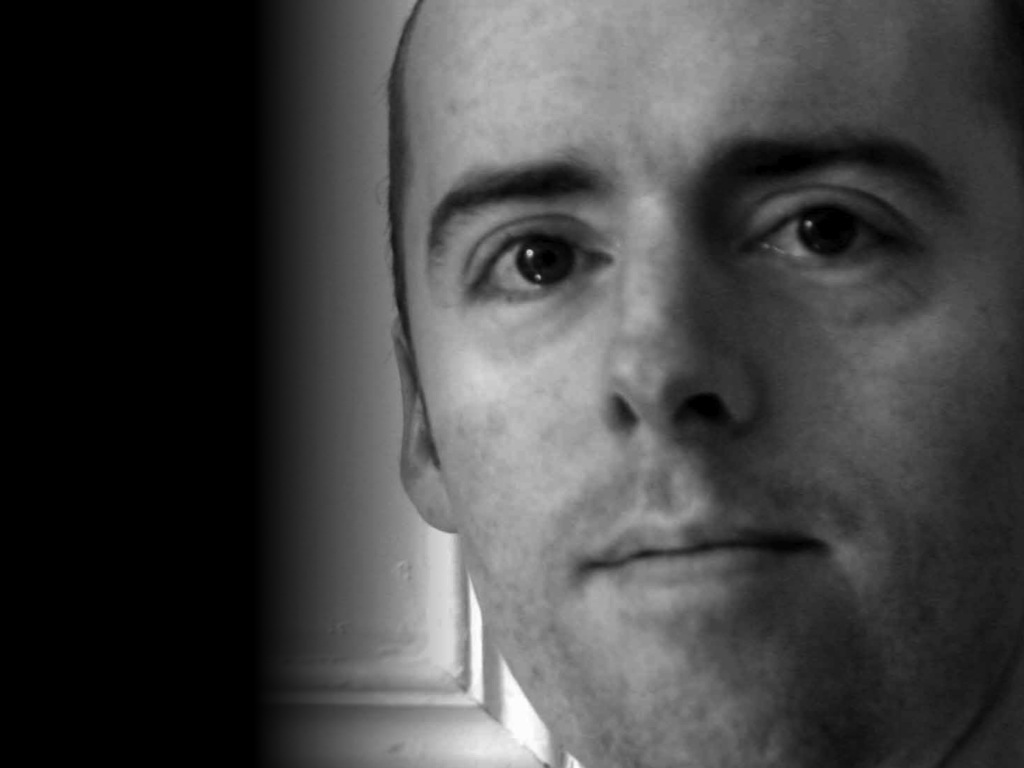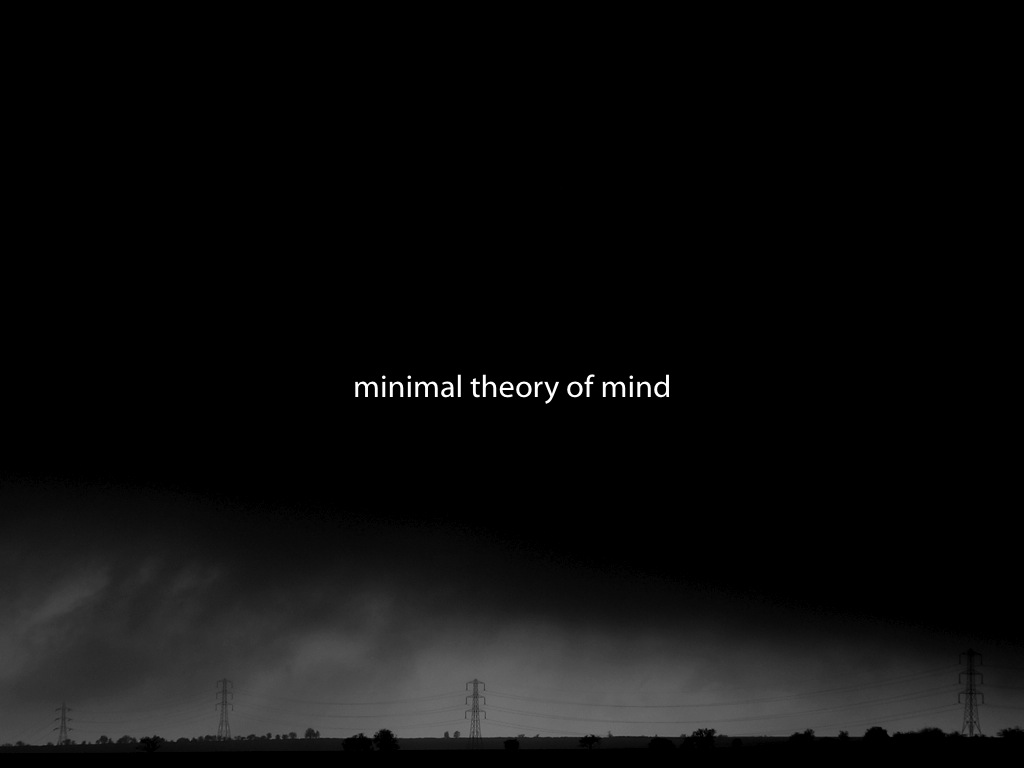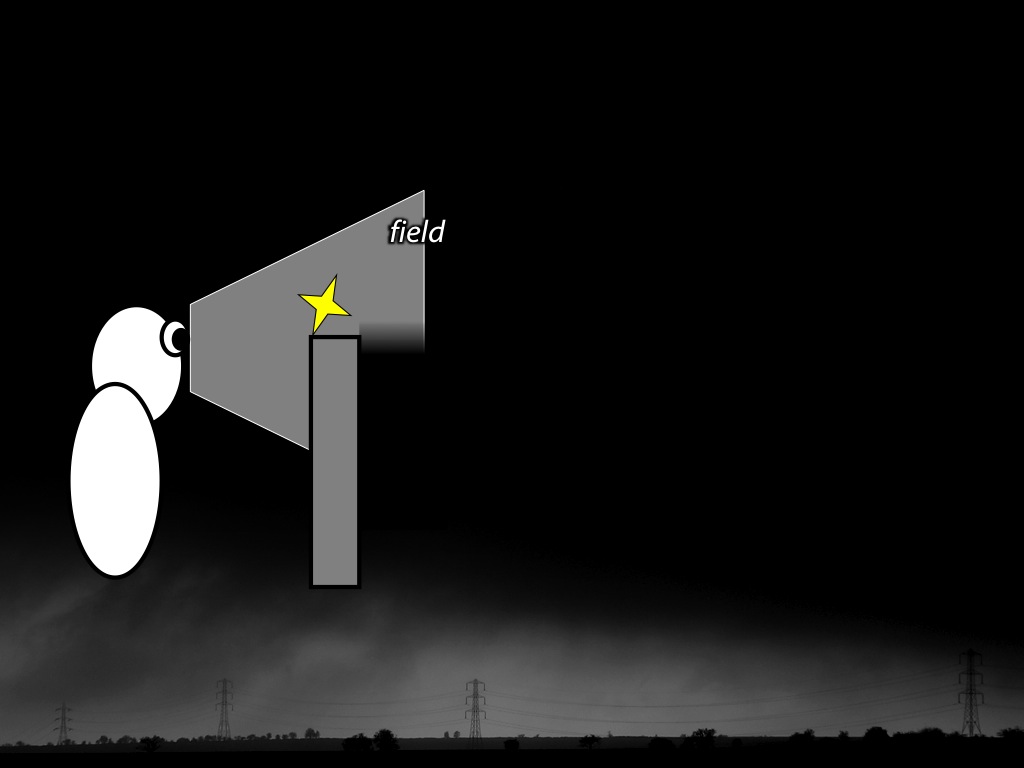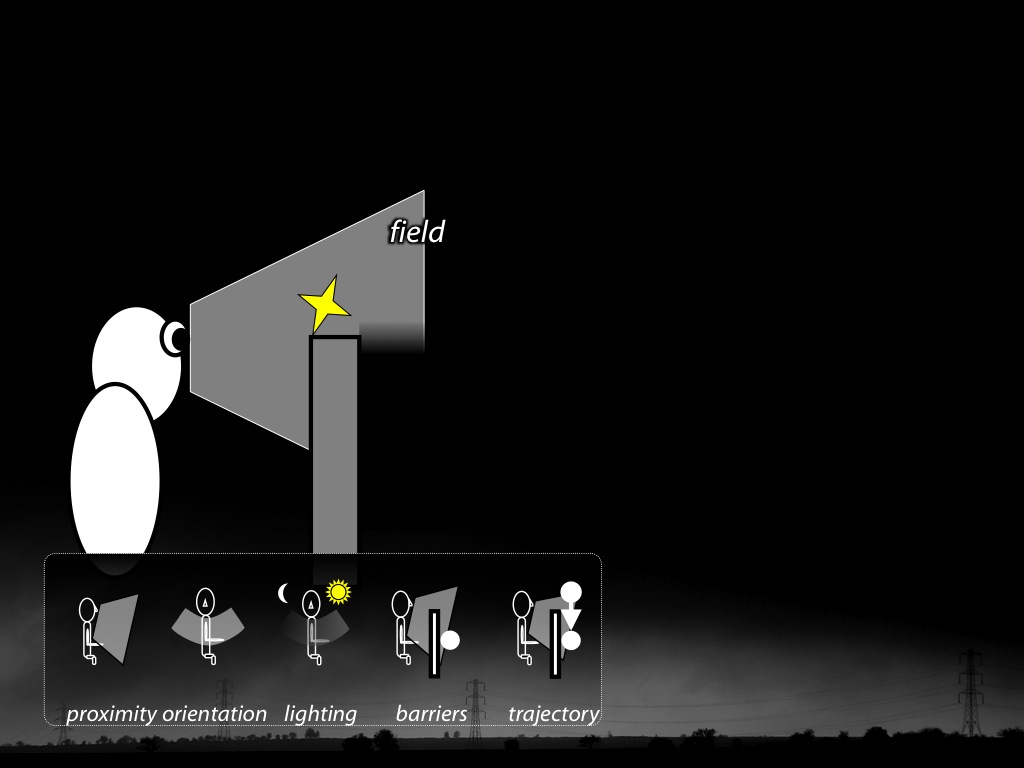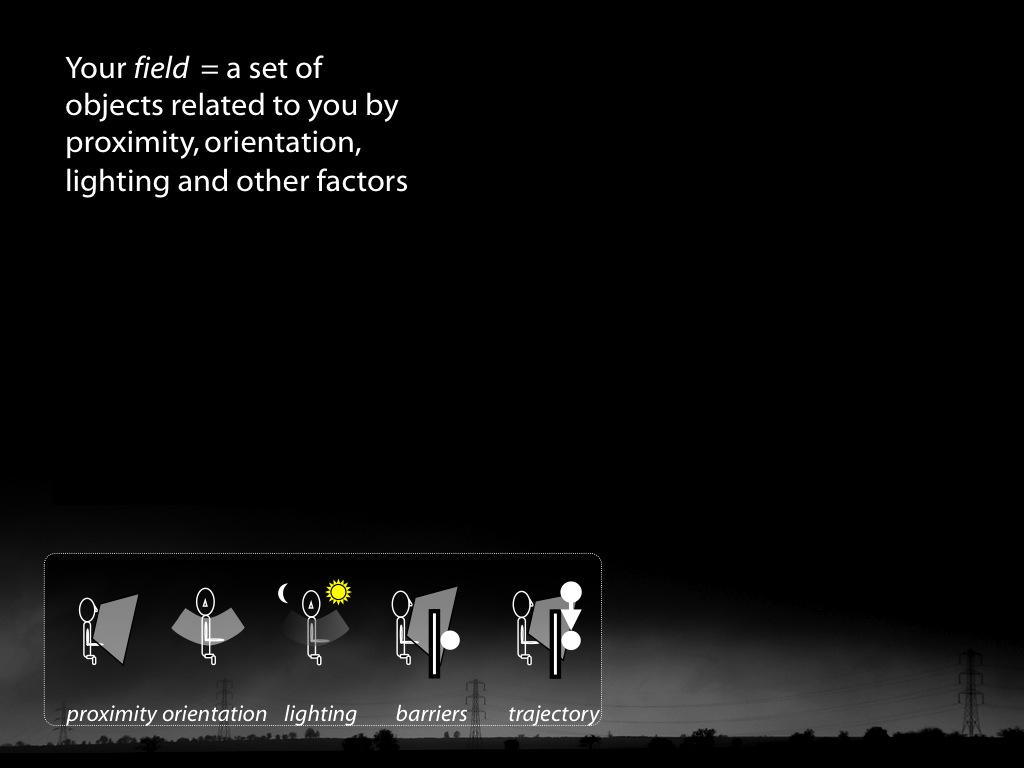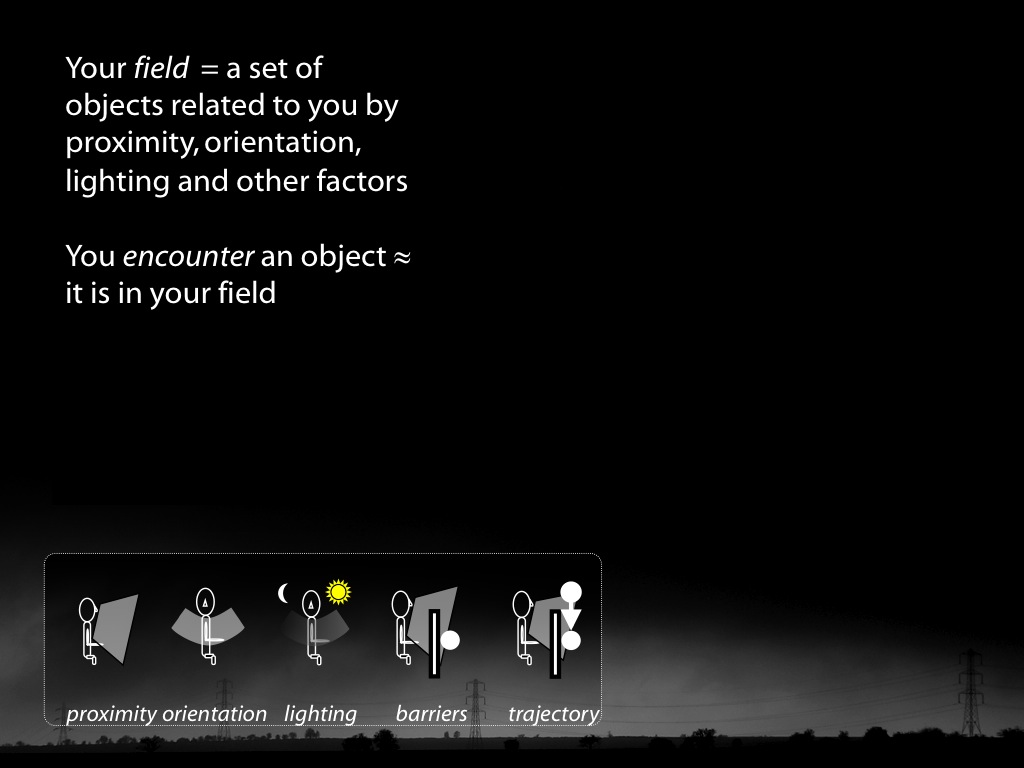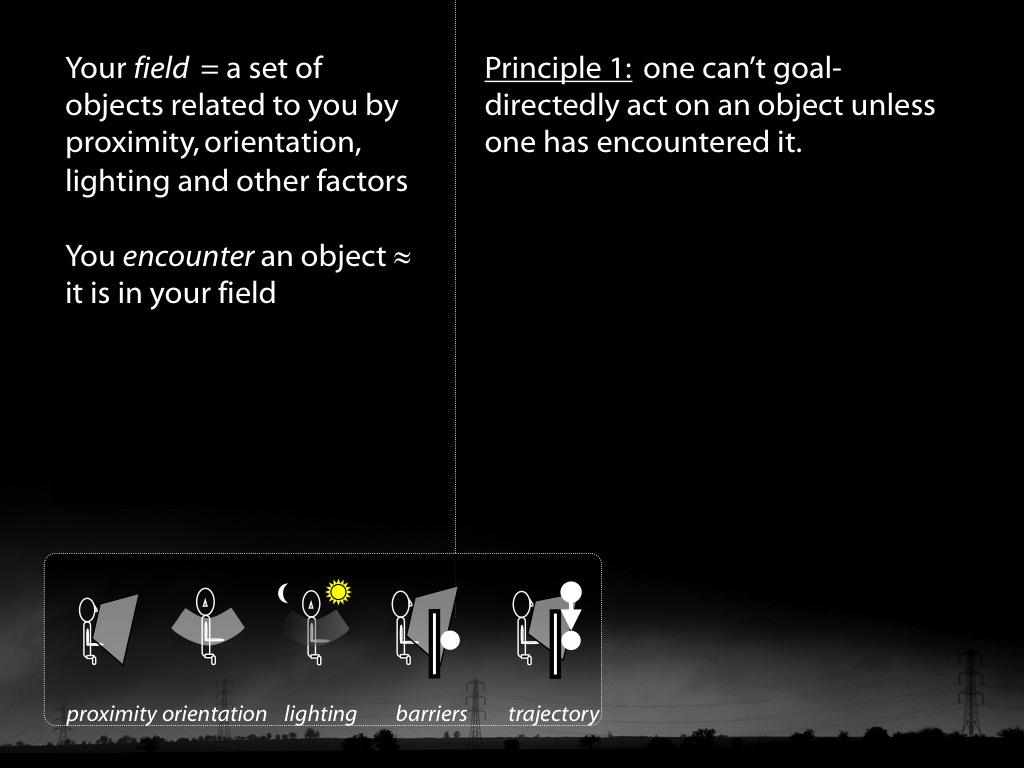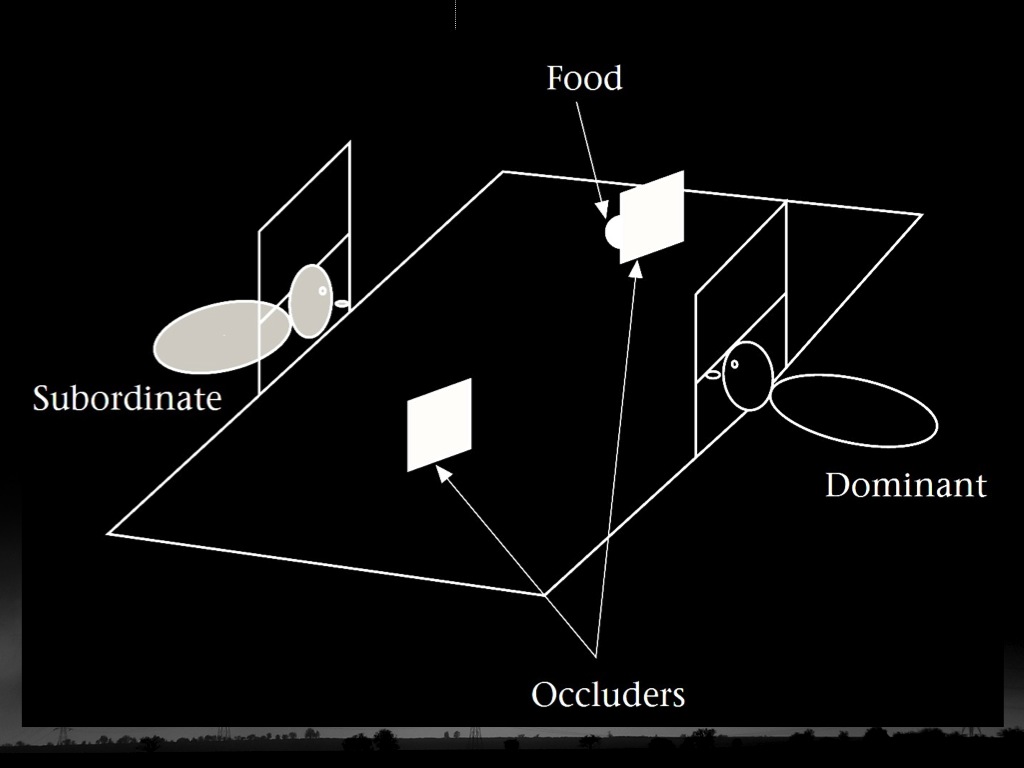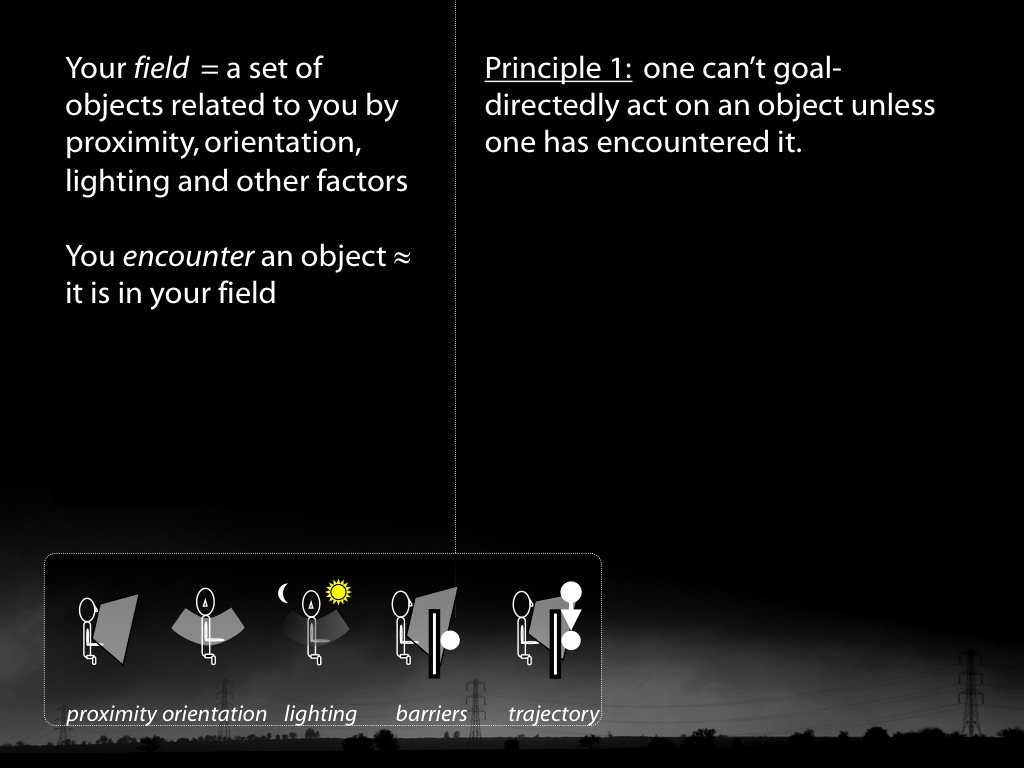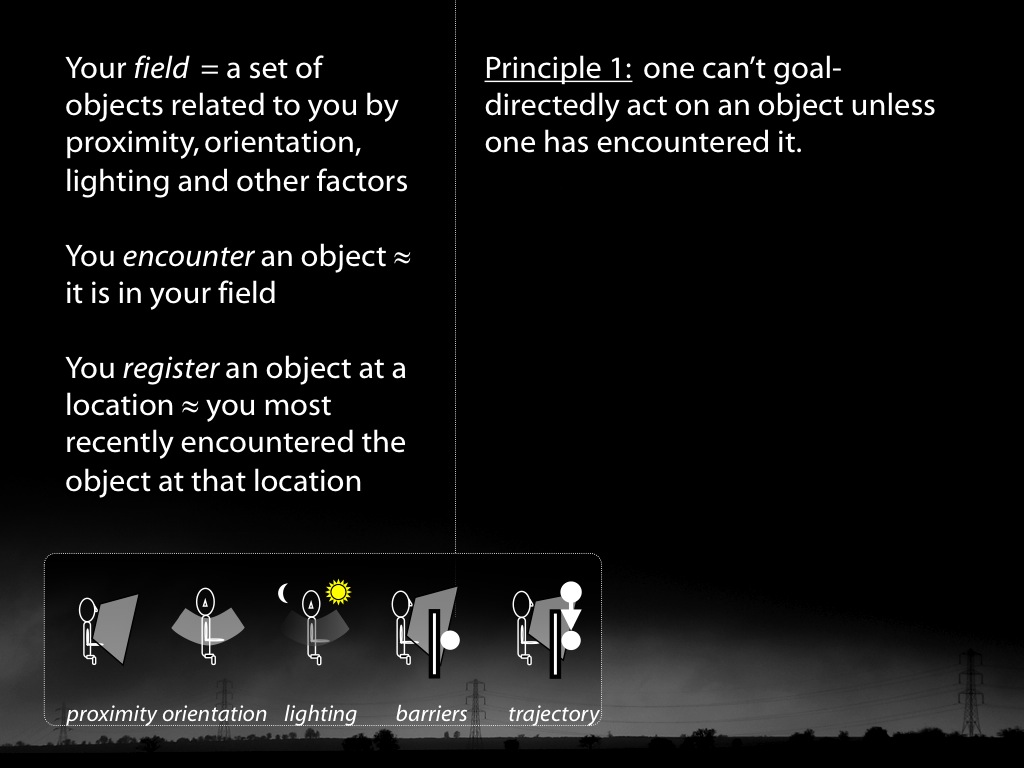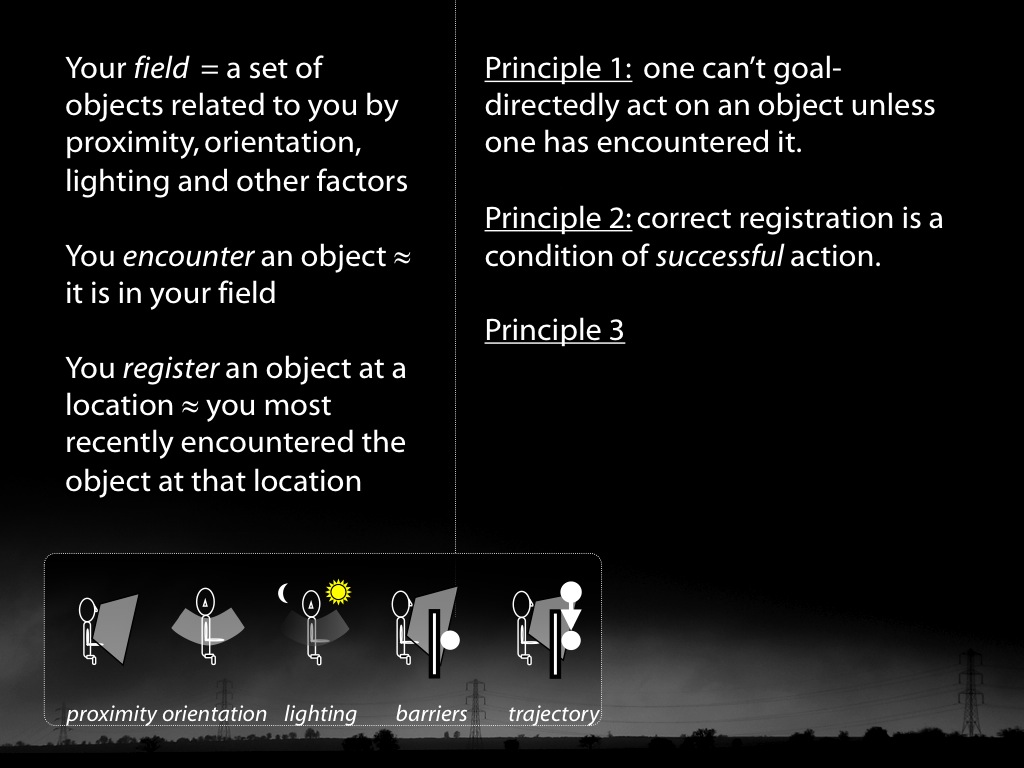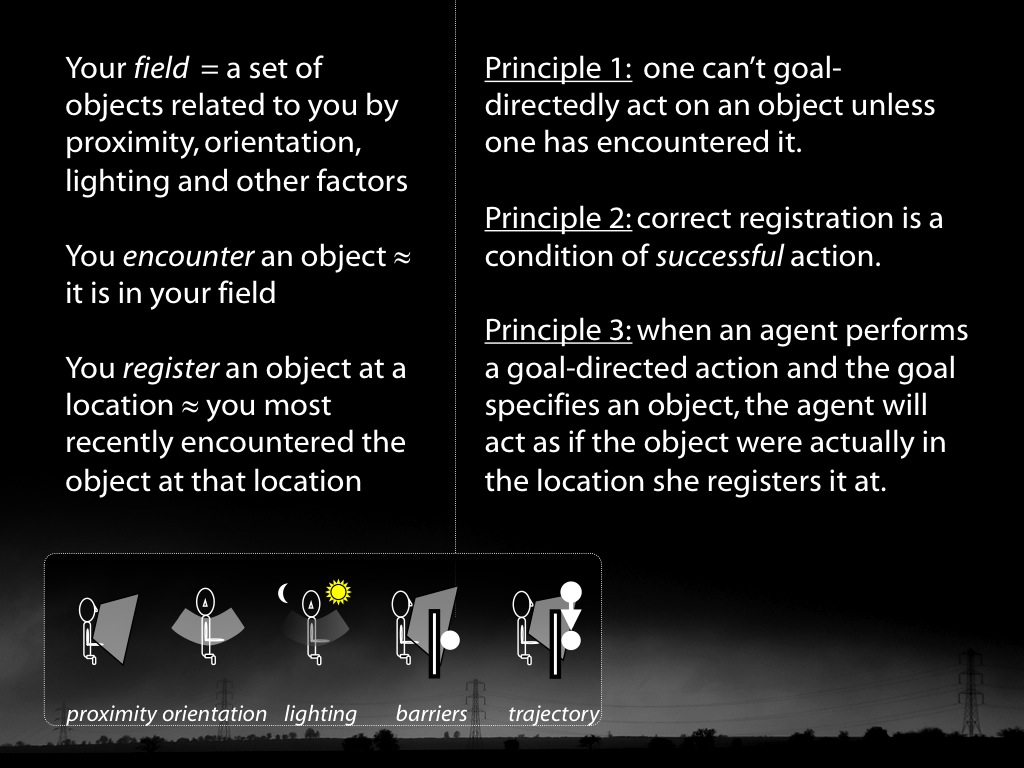Press the right key for the next slide (or swipe left)
also ...
Press the left key to go backwards (or swipe right)
Press n to toggle whether notes are shown (no equivalent if you don't have a keyboard)
Press m or double tap to see a menu of slides
Minimal Theory of Mind
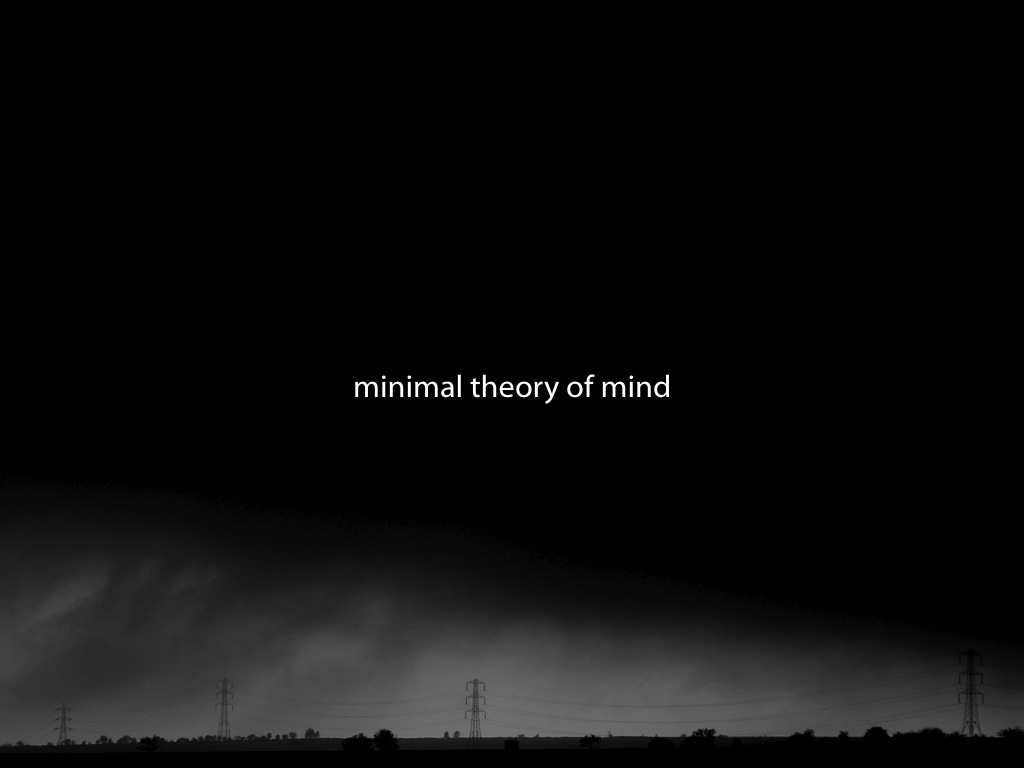
An agent’s \emph{field} is a set of objects related to the agent by proximity, orientation and other factors.
First approximation: an agent \emph{encounters} an object just if it is in her field.
A \emph{goal} is an outcome to which one or more actions are, or might be, directed.
%(Not to be confused with a \emph{goal-state}, which is an intention or other state of an agent linking an action to a particular goal to which it is directed.)
\textbf{Principle 1}: one can’t goal-directedly act on an object unless one has encountered it.
Applications: subordinate chimps retrieve food when a dominant is not informed of its
location \citep{Hare:2001ph}; when observed scrub-jays prefer to cache in shady, distant and
occluded locations \citep{Dally:2004xf,Clayton:2007fh}.
First approximation: an agent \emph{registers} an object at a location just if she most recently encountered the object at that location.
A registration is \emph{correct} just if the object is at the location it is registered at.
\textbf{Principle 2}: correct registration is a condition of successful action.
Applications: 12-month-olds point to inform depending on their informants’ goals and ignorance \citep{Liszkowski:2008al};
chimps retrieve food when a dominant is misinformed about its location \citep{Hare:2001ph};
scrub-jays observed caching food by a competitor later re-cache in private \citep{Clayton:2007fh,Emery:2007ze}.
\textbf{Principle 3}: when an agent performs a goal-directed action and the goal specifies an object, the agent will act as if the object were actually in the location she registers it at.
Applications: some false belief tasks \citep{Onishi:2005hm,Southgate:2007js,Buttelmann:2009gy}.
